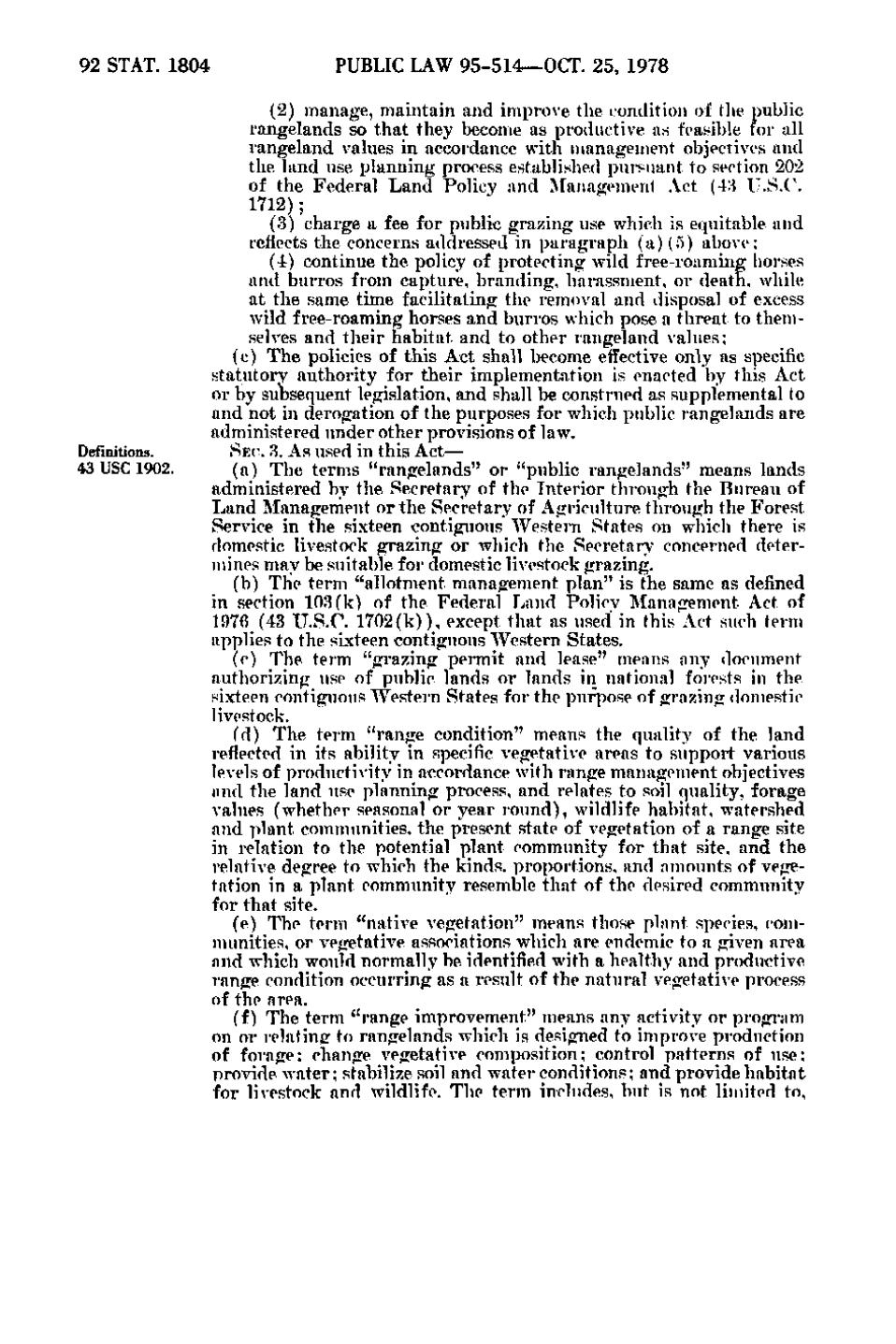92 STAT. 1804
,
PUBLIC LAW 95-514—OCT. 25, 1978 (2) manage, maintain and improve the condition of the public rangelands so that they become as productive as feasible for all rangeland values in accordance with management objectives and the land use planning process established pursuant to section 202 of the Federal Land Policy and Management Act (48 U.S.C^.
(3) charge a fee for public grazing use which is equitable and reflects the concerns addressed in paragraph (a)(5) above; (4) continue the policy of protecting wild free-roaming horses and burros from capture, branding, harassment, or death, while ' ': at the same time facilitating the removal and disposal of excess wild free-roaming horses and burros which pose a threat to themselves and their habitat and to other rangeland values; (c) The policies of this Act shall become effective only as specific statutory authority for their implementation is enacted by this Act or by subsequent legislation, and shall be construed as supplemental to and not in derogation of the purposes for which public rangelands are administered under other provisions of law. Definitions. S K C 8. As used in this Act— 43 USC 1902. (a) The terms "rangelands" or "public rangelands" means lands administered by the Secretary of the Interior through the Bureau of Land Management or the Secretary of Agriculture through the Forest Service in the sixteen contiguous Western States on which there is domestic livestock grazing or which the Secretary concerned determines may be suitable for domestic livestock grazing. (b) The term "allotment management p l a n " is the same as defined in section 103(k) of the Federal Land Policy Management Act of 1976 (43 U.S.C. 1702 (k)), except that as used in this Act such term applies to the sixteen contiguous Western States. (c) The term "grazing permit and lease" means any document authorizing use of public lands or lands in national forests in the sixteen contiguous Western States for the purpose of grazing domestic livestock. (d) The term "range condition" means the quality of the land reflected in its ability in specific vegetative areas to support various levels of productiAnty in accordance with range management objectives and the land use planning process, and relates to soil quality, forage values (whether seasonal or year r o u n d), wildlife habitat, watershed and plant communities, the present state of vegetation of a range site in relation to the potential plant community for that site, and the relative degree to which the kinds, proportions, and amounts of vegetation in a p l a n t community resemble that of the desired community for that site. (e) The term "native vegetation" means those plant species, communities, or vegetative associations which are endemic to a given area and which would normally be identified with a healthy and productive T-ange condition occurring as a result of the natural vegetative process of the area. (f) The term "range improvement" means any activity or program on or relating to rangelands which is designed to improve production of forage; change vegetative composition; control patterns of use; provide w a t e r: stabilize soil and water conditions; and provide h a b i t a t for livestock and wildlife. The term includes, but is not limited to.
�
